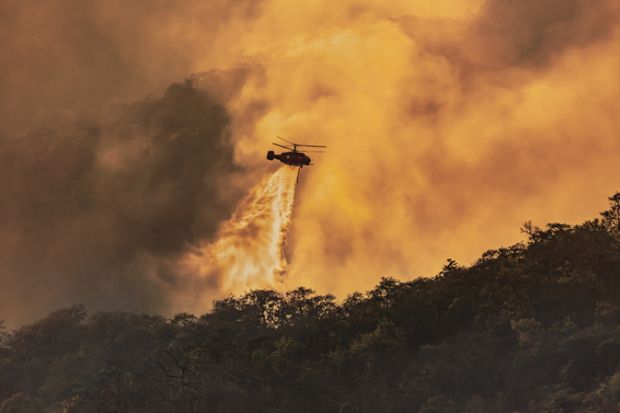“Science communication”, these days, often means giving an interview with the media or doing a TED Talk. There is no shortage of books giving guidance on the basic skills required, but Faith Kearns hopes that her new offering will provide a fresh take.
In her book Getting to the Heart of Science Communication: A Guide to Effective Engagement, Dr Kearns describes herself as “a scientist who has also been a workaday science communication practitioner for over 25 years”. She also reveals that she rarely finds her own experience reflected in the standard literature.
That is because vital forms of community-based work are largely ignored, even though large numbers of people are involved − and she has included interviews with about a hundred of them.
A self-proclaimed “disaster specialist”, Dr Kearns works for the California Institute for Water Resources (part of the University of California) on “water, drought, wildfire and climate change; how we can better adapt and respond to disaster”.
At the start of her career, she recalled, “science communications was about how to give a really good talk, how to message things. Yet the insistence on a particular message or frame is really alienating when you’re on the ground with people. I’m arguing for a more relational approach, focused on relationships between people, which requires some emotional intelligence and doesn’t rely so much on scientific authority.”
A turning point in her thinking, which Dr Kearns describes in her book, came about 15 years ago. She was presenting some research on “how houses could be built to withstand fire, as well as the controversial idea of being trained to stay with your house to keep it from burning…We had a lot of great research and some nice tools, including interactive checklists and hazard maps to make the work accessible.”
Yet the response of one man, Dr Kearns recalled, alerted her to how “the way we were presenting scientific information was really traumatising people, [because we were] not paying attention to the context that the community had just been through a fire. In my own training, which was very typical American scientist’s training, there was zero discussion about how what we were going to say would land with people…Not taking that seriously is selling the work short. It affects what people are able to hear from you.”
Her book also raises questions about what Dr Kearns calls the “hidden curriculum” in scientific training, which incorporates a “never-spoken-but-omnipresent message that feelings aren’t allowed in science”.
The book cites the argument of Naomi Oreskes, professor of the history of science at Harvard University, who has said that “scientists should express more alarm…expressing concern would help convey the seriousness of climate change − because it’s difficult to get excited about something when the experts themselves seem dispassionate”.
Dr Kearns’ book sets out tools for relating, listening, working with conflict and understanding trauma. It also stresses inclusion and social justice while challenging the familiar emphasis on “simplification and streamlining” in favour of embracing “nuance and complexity”.
The key to her own sort of science communication, Dr Kearns said, was to be “extremely open, very good at listening and very good at managing my own internal conflict when people say things that I think are wrong”.
Register to continue
Why register?
- Registration is free and only takes a moment
- Once registered, you can read 3 articles a month
- Sign up for our newsletter
Subscribe
Or subscribe for unlimited access to:
- Unlimited access to news, views, insights & reviews
- Digital editions
- Digital access to THE’s university and college rankings analysis
Already registered or a current subscriber? Login







